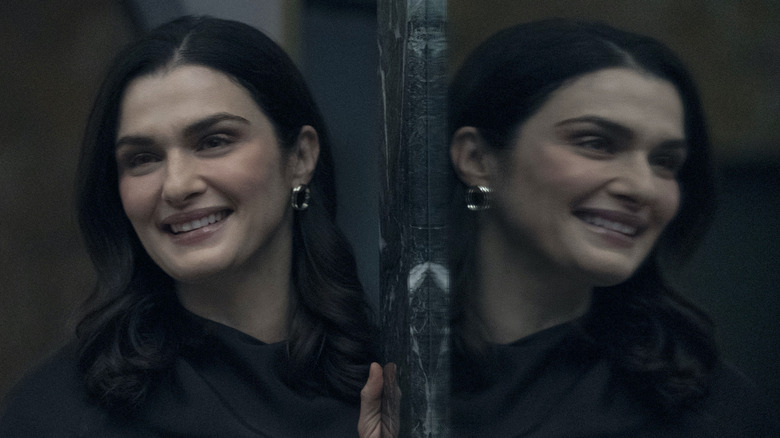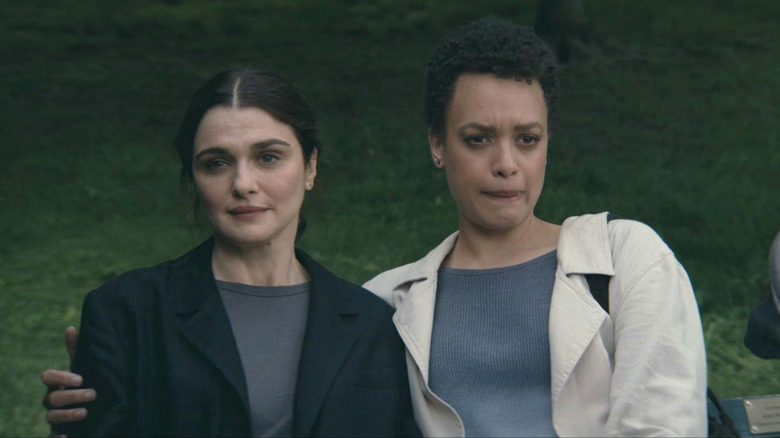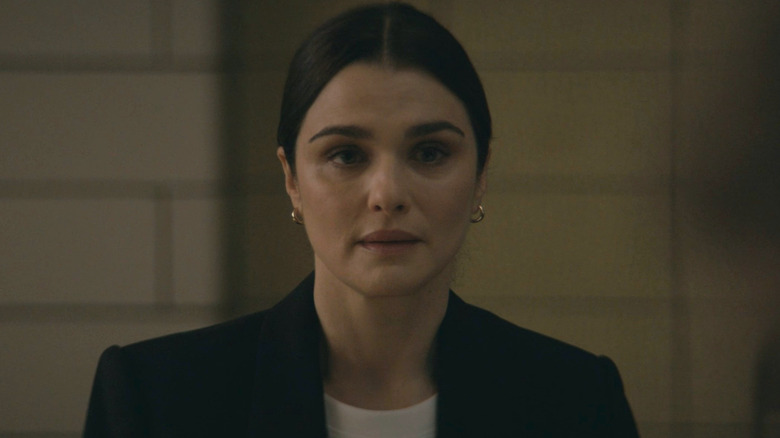How The Dead Ringers Series' Ending Differs From The Movie
Amazon's "Dead Ringers" may be an adaptation of the David Cronenberg-directed 1988 film of the same name, but that doesn't mean it strictly adheres to that movie's story. As a matter of fact, Amazon's "Dead Ringers" not only stars Rachel Weisz in its lead roles instead of Jeremy Irons, who led the original Cronenberg film, but it also diverges from its source material in several shocking ways. Indeed, while the film and TV versions of "Dead Ringers" end in similarly morbid, bloody fashion, the Prime Video series doesn't conclude on as definitively deadly a note as its 1988 predecessor.
Both versions focus on the Mantle twins, Beverly and Elliot, a pair of talented gynecologists who routinely swap identities without telling the other people in their lives. The TV and film iterations of "Dead Ringers" also both end with one of the twins killing the other. However, in Cronenberg's version of "Dead Ringers," it's the lovelorn, drug-addicted Beverly who kills Elliot during a shared, drug-induced haze. Elliot, notably, tells Beverly to kill him so that the two can be permanently separated from each other and Beverly can finally have a chance at a real life of his own.
Conversely, in the limited series version of "Dead Ringers," it's a pregnant Beverly who tells her more impulsive sister, Elliot, to kill her. The series' final episode subsequently culminates with Elliot performing an improvised C-section on Beverly and leaving her sister to bleed out before publicly assuming Beverly's identity. Just in case that wasn't dark enough, it's worth noting that Weisz's Elliot does all of this at the behest of Beverly herself.
Amazon's Dead Ringers ends far more ambiguously than the original film
Not only does the TV version of "Dead Ringers" rewrite its film predecessor's ending by switching its climactic killer's identity, but it also spares the life of one Mantle twin. In the final scene of David Cronenberg's "Dead Ringers," Jeremy Irons' Beverly returns to his dead twin's body and goes completely still in his brother's arms. The implication is that Elliot ultimately dies in the arms of his twin due to the effects of his own drug withdrawal. It's an ending that lives up to the tragic promise of the film's tagline, "Two Bodies. Two Minds. One Soul." In Cronenberg's "Dead Ringers," Beverly and Elliot literally cannot live without each other.
In Amazon's "Dead Ringers," however, Rachel Weisz's Elliot does continue to live after her sister's death. The series' second-to-last scene sees Elliot engage in a conversation with a woman from the support group Beverly used to secretly attend. Elliot then goes to one of the group's meetings posing as her sister. The limited series, in other words, ends on a much more emotionally ambiguous note than its 1988 predecessor, one that forces viewers to ponder how well Elliot will be able to live without her sister.
In an interview with The Hollywood Reporter, "Dead Ringers" showrunner Alice Birch revealed that she knew early on that she wanted the series to end on a different note than Cronenberg's film. "The idea of the ultimate twin swap felt quite delicious," Birch said. When discussing the nature of Beverly's death at the hands of Elliot, Birch added, "Strangely, I think it's quite a loving thing that they do for one another. They kind of save each other."
The Dead Ringers finale raises a major question about the show's story
Throughout "Dead Ringers," viewers are shown scenes of Rachel Weisz's Beverly attending support group meetings meant to help her cope with the "death" of her twin sister. At first, the scenes come across as undeniably confusing, but it's eventually assumed that Beverly is attending the meetings under false pretenses in order to establish some kind of emotional separation between her and her sister. However, in the series' final scene, which briefly shows Elliot attending a new meeting under the guise of her sister, viewers are left to wonder whether their assumptions about the show's previous support group sequences were correct or not.
That is to say that, while it's clear Beverly did start attending those meetings on her own at some point, there's no way of knowing whether any of the show's support group scenes secretly take place after Beverly's death. If some of them do, that'd mean viewers weren't always watching Beverly mourning a fake loss, but rather Elliot posing as her dead sister. In her conversation with The Hollywood Reporter, Alice Birch said that she and Weisz very much wanted viewers to wrestle with that sense of uncertainty at the end of "Dead Ringers."
"I wanted the feeling of a snake eating its tail, as a loop at the end," Birch said. "We might have felt confident which twin we were watching but then, did we?" No matter which explanation viewers choose to believe, there's no denying that Birch and Weisz ultimately decided to end their version of "Dead Ringers" on a far less certain note than the 1988 film that came before it.


